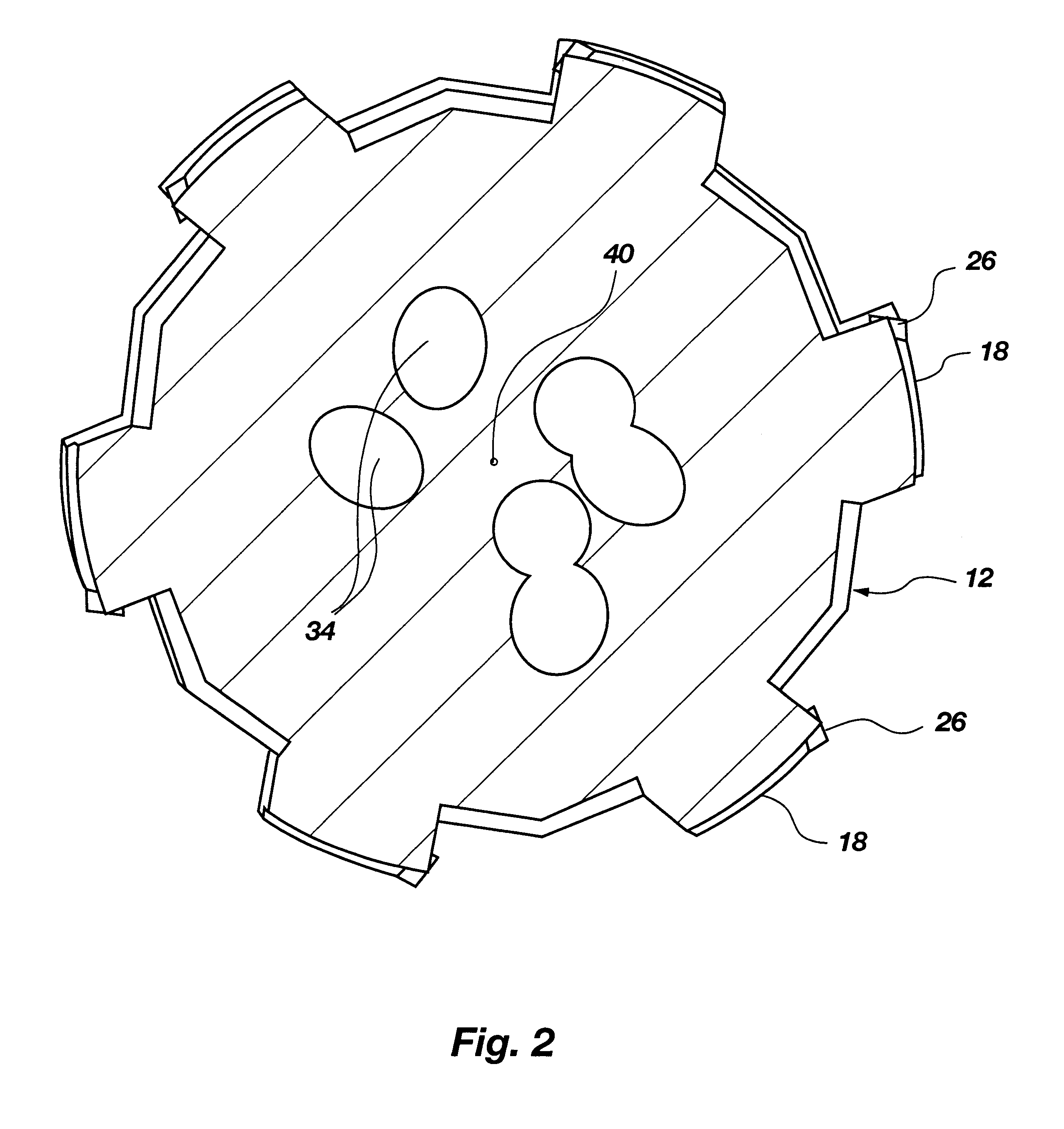Methods of high temperature infiltration of drill bits and infiltrating binder
a technology of drill bits and binder, which is applied in the field of infiltration of metal matrices with metal or metal alloy binders, can solve the problems of affecting the quality of drill bits, and requiring a long time period, so as to facilitate infiltration over a short period of time, increase strength, and melt relatively quickly
- Summary
- Abstract
- Description
- Claims
- Application Information
AI Technical Summary
Benefits of technology
Problems solved by technology
Method used
Image
Examples
Embodiment Construction
FIGS. 1 and 2 illustrate an exemplary drill bit 10 that may include the inventive infiltrating binder and which may be manufactured in accordance with the inventive process. Drill bit 10, as shown, includes a variety of external and internal components, such as a bit body 12 that includes six blades or wings 18 and gage pads 28 at the periphery of the bit body. Blades 18 are separated by generally radially extending fluid courses 30, which are continuous with junk slots 32 positioned between gage pads 28. Fluid courses 30 are continuous with internal fluid passages 34.
In operation, junk slots 32 are provided with drilling fluid, or "mud," from the drill string through shank 14, which communicates with internal fluid passages 34. The "mud" exits internal fluid passages 34 through nozzles 36, which are disposed in cavities 38 defined in fluid courses 30, and is directed along the fluid courses to junk slots 32.
At the distal end of the bit body 12, blades 18 include sockets 22 with inc...
PUM
| Property | Measurement | Unit |
|---|---|---|
| melting temperatures | aaaaa | aaaaa |
| melting temperatures | aaaaa | aaaaa |
| melting temperature | aaaaa | aaaaa |
Abstract
Description
Claims
Application Information
 Login to View More
Login to View More - R&D
- Intellectual Property
- Life Sciences
- Materials
- Tech Scout
- Unparalleled Data Quality
- Higher Quality Content
- 60% Fewer Hallucinations
Browse by: Latest US Patents, China's latest patents, Technical Efficacy Thesaurus, Application Domain, Technology Topic, Popular Technical Reports.
© 2025 PatSnap. All rights reserved.Legal|Privacy policy|Modern Slavery Act Transparency Statement|Sitemap|About US| Contact US: help@patsnap.com



